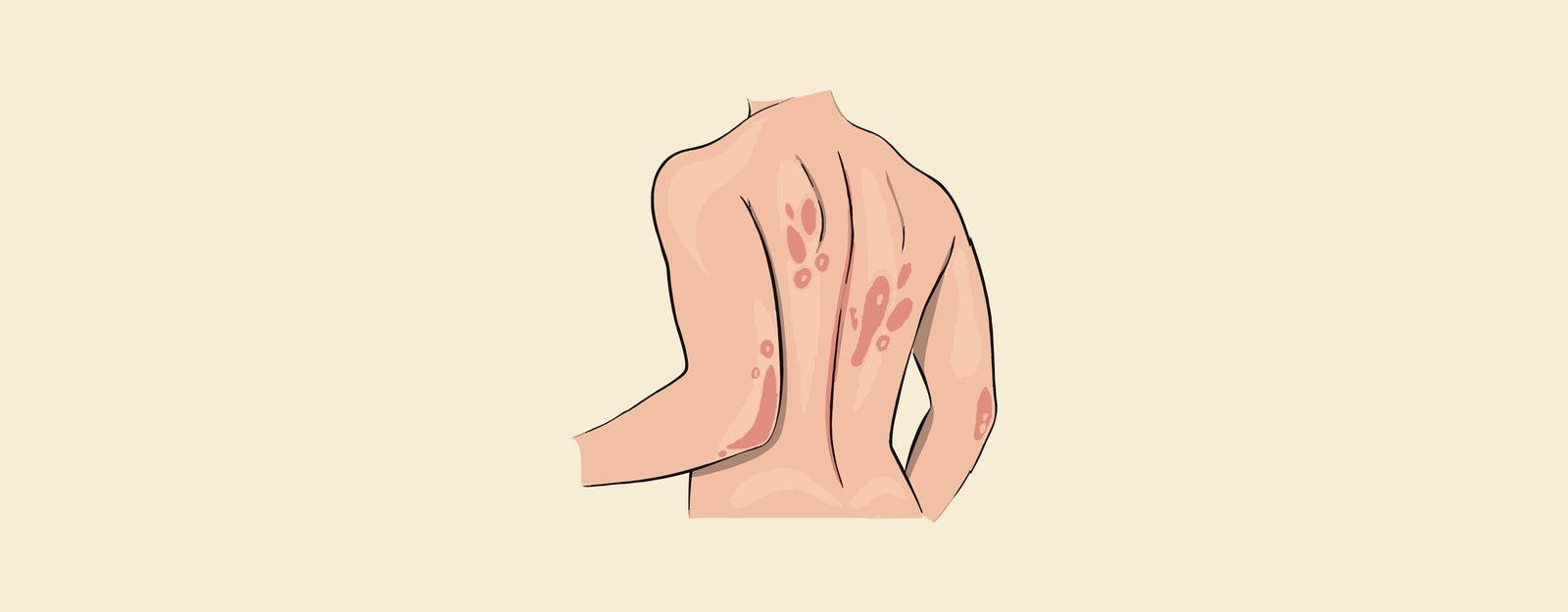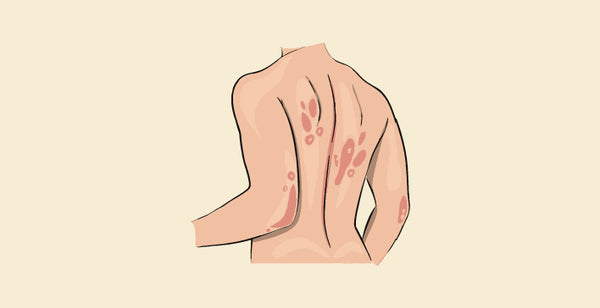Difference between Leukemia Rash vs Psoriasis: Leukemia Rash usually shows small crimson or purple spots or larger patches because of atypical tiers of white blood cells or platelets within the blood. It can also resemble bruises and might appear everywhere in the body. On the other hand, Psoriasis appears as raised, crimson patches protected with silvery scales, commonly discovered on the elbows, knees, and scalp, and decreased lower back, stemming from speedy skin mobile increase.
Difference between Leukemia Rash and Psoriasis
Leukemia Rash regularly accompanies other leukaemia symptoms like fatigue and clean bruising, Psoriasis may additionally cause itching and pain, now and again extending to psoriatic arthritis. The table below provides the differences between Leukemia Rash and Psoriasis.
|
Feature |
Leukemia Rash |
Psoriasis |
|
Underlying Cause |
Result of leukaemia cells infiltrating the skin |
A chronic autoimmune condition affecting skin cells |
|
Appearance |
Red or pink patches, bumps, or nodules |
Raised, red patches covered with silvery scales |
|
Distribution |
Can occur anywhere on the body |
Commonly affects scalp, elbows, knees, lower back |
|
Itching |
May or may not be present |
Often associated with itching |
|
Chronicity |
Indicates underlying leukaemia; may persist or worsen |
Chronic condition with periods of flare-ups and remission |
|
Treatment |
Addresses underlying leukaemia with chemotherapy, targeted therapy, etc. |
Focuses on reducing inflammation and slowing skin cell turnover with topical treatments, phototherapy, etc. |
|
Contagiousness |
Not contagious |
Not contagious |
|
Visibility on Skin |
Skin lesions, petechiae, swelling |
Raised red patches, silvery scales |
Browse The Best Scrubs Collection!
What is Leukemia Rash?
Leukemia Rash refers to pores and skin changes that arise as a result of leukaemia, a form of cancer affecting the blood and bone marrow. This rash commonly occurs as small pink or pink spots referred to as petechiae or larger patches referred to as ecchymosis. The appearance of the rash is because of the abnormal accumulation of leukaemia cells inside the skin or the disruption of everyday blood float.
Causes of Leukemia Rash
The real causes of Leukemia Rash aren't understood, but it is believed to be associated with the infiltration of leukaemia mia cells into the pores and skin or the disruption of blood waft. Here are some causes that may contribute to Lukemia Rash.
- Leukemia Cells Infiltrating the Skin: In some cases of leukaemia, cancerous white blood cells can migrate from the bloodstream and infiltrate the skin tissue. This infiltration can cause the formation of skin lesions, including crimson or purple spots or large patches.
- Disruption of Blood Flow: Leukemia can disrupt the regular functioning of blood vessels, main to modifications in blood drift to the skin. This disruption can bring about the advent of pores and skin rashes or lesions.
- Cytokine Release: Leukemia cells release diverse cytokines, which are signalling molecules that can affect the conduct of nearby cells, which includes skin cells. The release of certain cytokines may also contribute to the development of skin rashes associated with leukaemia.
- Chemotherapy or Radiation Therapy: In some cases, the rash may be a facet impact of leukaemia remedy, including chemotherapy or radiation therapy. These treatments can motivate pores and skin irritation, irritation, or different skin reactions.
- Infection or Immune Response: People with leukaemia are extra liable to infections due to their weakened immune device. Infections or inflammatory reactions might also contribute to the development of skin rashes in individuals with leukaemia.
Symptoms of Leukemia Rash
- Skin Lesions: Leukemia rash usually appears as red or pink patches, bumps, or nodules on the skin. These lesions may vary in size and shape.
- Bruising or Petechiae: Leukemia can cause abnormalities in the blood, which leads to easy bruising or small red or purple spots known as petechiae.
- Itching: People with leukaemia rash may experience itching or discomfort associated with the skin lesions.
- Swelling: Sometimes the affected areas of the skin may become swollen or inflamed.
- Change in Texture: The affected skin may feel different from the surrounding skin, it can be rough, scaly, or have a different texture.
What is Psoriasis?
Psoriasis is a continual autoimmune pore and skin circumstance characterised by the fast buildup of skin cells, mainly by the formation of thick, crimson patches with silvery scales. It is due to an ordinary immune response that triggers the pores and skin cells to grow too fast, normally taking days as opposed to weeks to mature. This excessive increase results in the formation of raised, inflamed patches, known as plaques, which can appear everywhere on the body but typically occur on the elbows, knees, scalp, and lower back. Psoriasis is not contagious, however, it can be associated with different fitness situations inclusive of psoriatic arthritis, which impacts the joints.
Causes of Psoriasis
- Genetics: Psoriasis tends to run in families, suggesting a genetic predisposition to the condition. Specific genetic variations, particularly related to immune gadget genes, might also increase the probability of developing Psoriasis.
- Immune System Dysfunction: Psoriasis is taken into consideration as an autoimmune ailment, in which the immune gadget mistakenly assaults wholesome skin cells, triggering infection and the fast turnover of pores and skin cells.
- Environmental Triggers: Certain environmental elements can exacerbate or trigger Psoriasis flare-usain-prone people. These triggers might also encompass stress, infections, injury to the skin, and positive medicinal drugs.
- Lifestyle Factors: Lifestyle conduct together with smoking, immoderate alcohol consumption, weight problems, and poor eating regimen can also have an impact on the improvement and severity of Psoriasis.
- Hormonal Changes: Hormonal adjustments, inclusive of the ones occurring at some stage in puberty, being pregnant, or menopause, can affect the immune machine and potentially cause or worsen Psoriasis signs.
Symptoms of Psoriasis
- Red Patches of Skin: Areas of pores and skin stricken by Psoriasis commonly appear pink or pink in colour because of infection.
- Thickened Skin: The affected pores and skin regularly turn thickened and raised, forming plaques. These plaques may additionally have a silvery-white or greyish appearance due to the accumulation of dead skin cells.
- Silvery Scales: Psoriasis plaques are frequently protected with silvery-white scales, which result from the rapid turnover of skin cells.
- Dry and Cracked Skin: The skin stricken by Psoriasis may additionally feel dry, cracked, and once in a while painful or itchy.
- Itching or Burning Sensation: Psoriasis can motivate itching or a burning sensation, mainly in regions in which the skin is specifically inflamed.
Shop Best Lab Coats From Here!
Similarities among Leukemia Rash and Psoriasis
- Redness: Both Leukemia Rash and Psoriasis can cause redness on the skin. In Leukemia Rash, this redness might also appear as patches or nodules, whilst in Psoriasis, it often offers well-described, raised, red plaques.
- Scaling: Scaling is a common characteristic of both. In Psoriasis, thick, silvery scales normally cover the pink patches of skin, and in Leukemia Rash, scaling might also occur however is commonly much less distinguished compared to Psoriasis.
- Itching: Itching may be a symptom of both Leukemia Rash and Psoriasis. Individuals with both situations may experience this in varying degrees.
Order the Best Jogger Scrub From Here!
| Check out More Articles | |
| Difference Between Cartilage And Bone | |
| Difference Between Endocrine And Exocrine Glands | |
| Difference Between Cell Wall And Cell Membrane | |















